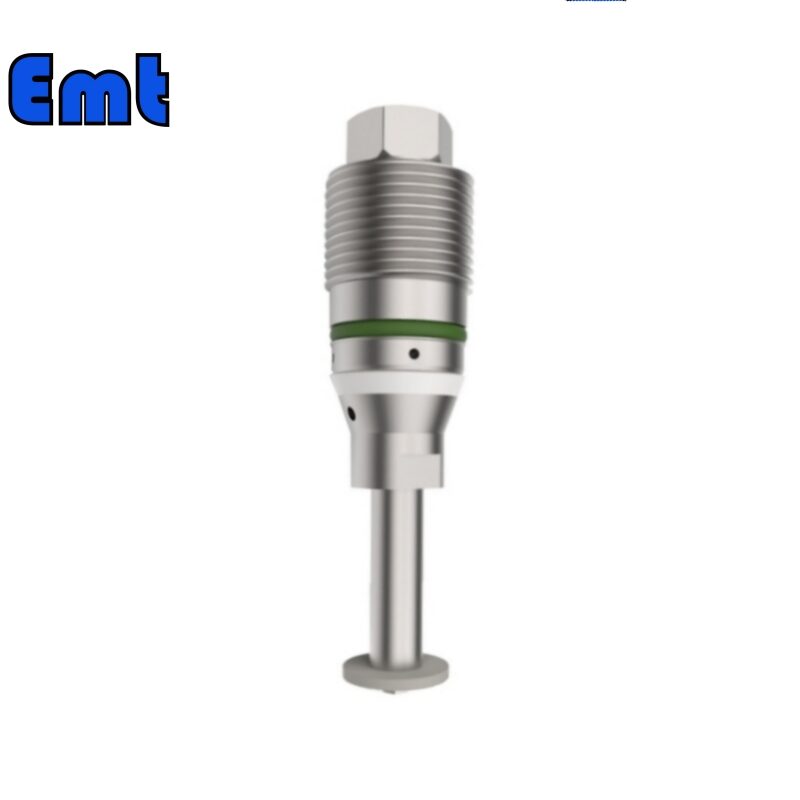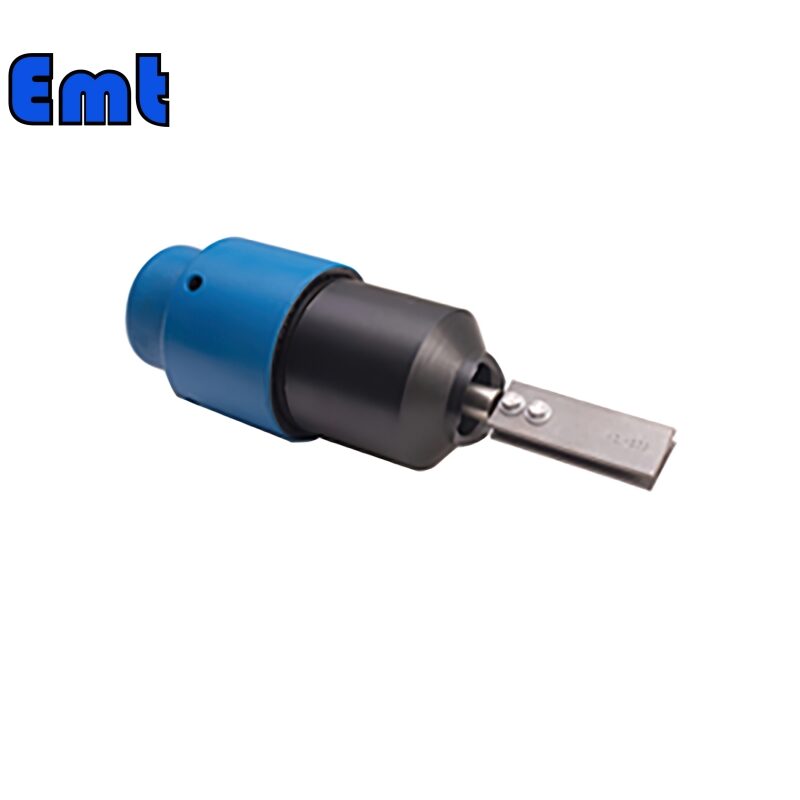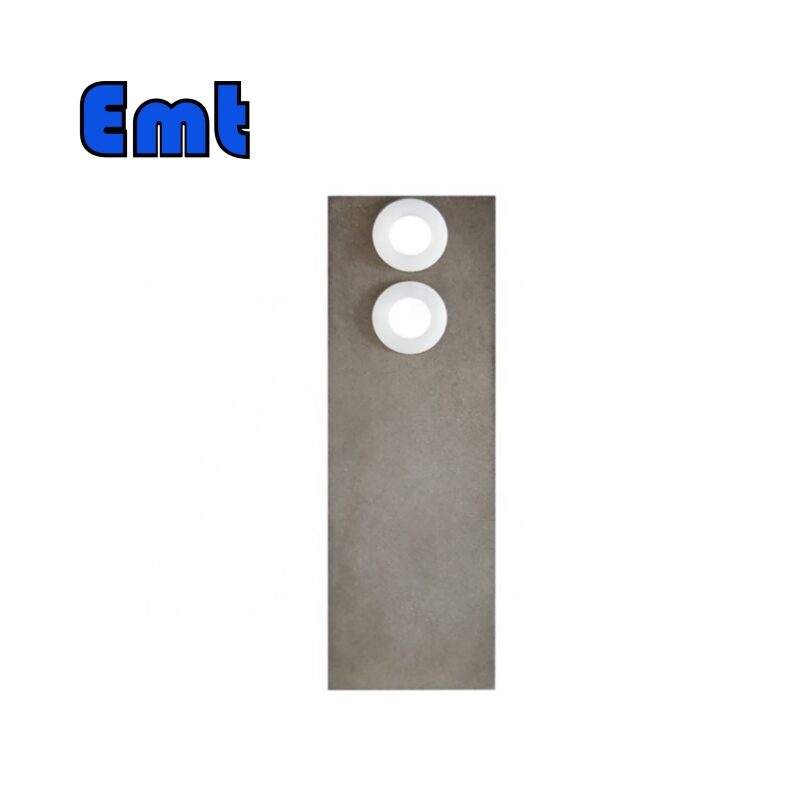Description

Corrosion Coupon Assembly and Corrosion coupon is a set of coupon tools. They help detect the corrosion rate in pipeline systems. Through the assembly operators can put coupons into the pipe successfully.
Selection Model of Corrosion Coupon
| Model | ||||||
| EMT-CIPA | Access Fitting Body of Corrosion Coupon | |||||
| – The material of Access Fitting Body | ||||||
| 0 | CS | |||||
| 1 | 316SS | |||||
| 2 | 316LSS | |||||
| 3 | DUPLEX SS | |||||
| The Type of Access Fitting Body | ||||||
| B | 2″Welded(suffix “pressure rating” can be added to B) | |||||
| F | 2″ANSI Flange(suffix “pressure rating & sealing type” can be added to F) | |||||
| -Tee Size- pressure rating & sealing type if the flanged end | ||||||
| 0 | No Tee | |||||
| 1 | 1/4″NPT(F)Tee | |||||
| 2 | 1/2″NPT(F)Tee | |||||
| 3 | 3/4″NPT(F)Tee | |||||
| 4 | 1″NPT(F)Tee | |||||
| 5 | Hole for 1/4″SWN Flange | |||||
| 6 | Hole for 1/2″SWN Flange | |||||
| 7 | Hole for 3/4″SWN Flange | |||||
| 8 | Hole for 1″SWN Flange | |||||
| -Protective Cover Type/ Material | ||||||
| 0 | No Protective Cover | Material | ||||
| 1 | Without hole | CS or 0 | ||||
| 2 | With hole | SS or 1 | ||||
| 3 | Bleed Valve | DSS or 3 | ||||
| 4 | Bleed Valve, & Pressure Gauge | |||||
| For Example, EMT-CIPA-0F600#RF-2-1/CS shows 2″ANSI 600#RF Flange Access Fitting Body in CS, 1/2″NPT(F)Tee, Protective Cover in CS without hole | ||||||
| 0F600#RF: 0F_ Access Fitting Body is Flanged in CS, 600#RF _Size is 2″ANSI 600#RF, | ||||||
| 2:Tee size is 1/2NPT(F) | ||||||
| 1: Protective cover type is without a hole | ||||||
| /CS: Protective cove material in CS | ||||||
Components of Corrosion Coupon Assembly
- Cover
- The cover protects the coupon from external damage.
- It ensures a secure and stable environment.
- The cover material resists corrosion and environmental factors.
- Proper cover selection enhances the coupon assembly’s effectiveness.
- Body
- The body houses the corrosion coupon.
- It provides structural integrity to the assembly.
- The body design ensures compatibility with various coupon types.
- Proper body selection prevents leaks and maintains system integrity.
- Holder
- The holder secures the coupon in place.
- It allows for easy installation and removal.
- Holders come in various designs for different applications.
- Proper holder selection simplifies maintenance and data collection.
Common Materials of Corrosion Coupons
Carbon steel, a versatile and widely used material, consists primarily of iron and carbon. The carbon content typically ranges from 0.05% to 2.0%, influencing the steel’s hardness and strength. Additionally, carbon steel may contain small amounts of other elements like manganese, silicon, and copper to enhance its properties. This steel offers a balance of strength and ductility, making it suitable for various industrial applications. Its affordability and ease of production further contribute to its popularity in manufacturing and construction.
N80, a type of high-strength carbon steel, is commonly used in the oil and gas industry, particularly for casing and tubing. It consists primarily of iron, with a carbon content typically around 0.3%. Additionally, N80 contains other alloying elements such as manganese (up to 1.65%), silicon (up to 0.35%), and trace amounts of phosphorus and sulfur. The combination of these elements provides N80 with high tensile strength and excellent resistance to wear and fatigue. Its robust mechanical properties make it ideal for environments that demand durability and reliability, such as deep-well drilling and high-pressure applications.
Monitoring and Maintaining Corrosion Coupons
Monitoring and maintaining corrosion coupons requires a systematic approach. One important aspect is routine inspection protocols. Checks should be carried out regularly to ensure data accuracy. The frequency of inspection depends on the environment and the material of the voucher. Tools and techniques, such as visual inspection and ultrasonic thickness gauges, help with these processes. Continuous inspection helps identify early signs of corrosion and prevent potential problems.
Data collection methods are the second key component. Manual data collection includes physical removal and checking coupons. Technicians measure weight loss, pitting and other indicators. Automated systems, on the other hand, use sensors and remote monitoring. These systems provide continuous data without the need for frequent removal. Combining these two methods ensures comprehensive data collection and improves the accuracy of corrosion assessments.
The final section deals with interpreting corrosion data. Analysis of corrosion rates helps determine the severity and speed of material degradation. Identify corrosion types, such as pitting or uniform corrosion, to inform appropriate reactions. Accurate explanations help in deciding on preventive measures or necessary maintenance. This process ultimately extends the service life of the infrastructure, ensuring safety and reliability.
Benefits of Using Corrosion Coupons
The use of corrosion coupons provides significant benefits for pipeline management. One major advantage is the extended service life of the pipeline. Early detection of corrosion allows timely intervention before widespread damage occurs. Technicians can take timely preventive measures, such as applying corrosion inhibitors or performing repairs. This proactive approach helps to extend the life of the pipe and reduce the need for expensive replacement. Ultimately, maintaining pipeline integrity ensures long-term operational efficiency.
By monitoring pipeline conditions, operators can address issues before they escalate. Ensure operational integrity with regular corrosion assessments to minimize the risk of leaks or ruptures. This not only protects the environment but also human life and property. The consistent use of corrosion coupons supports safer and more reliable piping systems.
In addition, detecting the corrosion rate of the pipeline is critical to the maintenance program. Corrosion gauges provide accurate data on the rate of degradation of pipe materials. Knowing corrosion rates allows operators to schedule maintenance activities more efficiently. This information helps prioritize areas that require immediate attention and optimize resource allocation. In addition, knowing the corrosion rate can help predict the performance of future pipelines. With accurate data, operators can make informed decisions to ensure continued and efficient operations.







Reviews
There are no reviews yet.